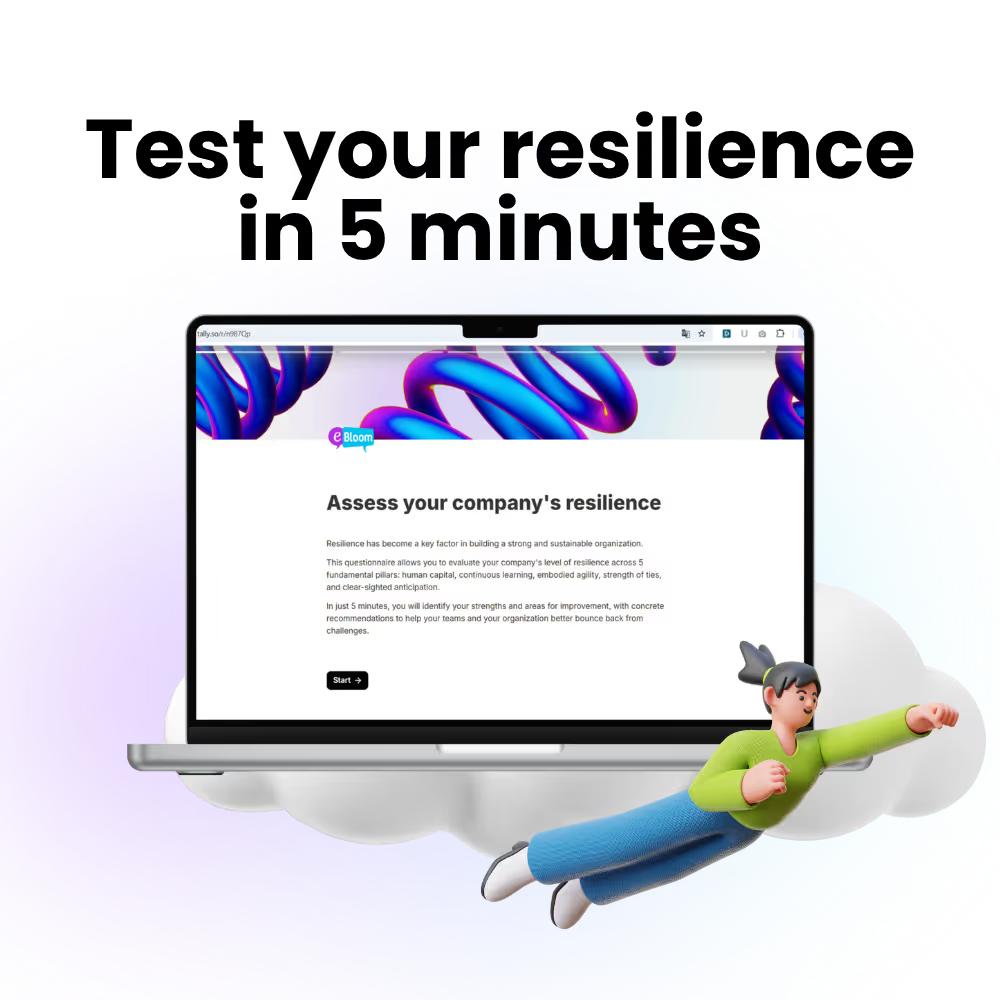November. The end of the year is approaching, and with it, the marathon of annual performance reviews. This is an exercise often dreaded, perceived as time-consuming or purely administrative, yet it is essential for effective talent management.
Far from being a mere formality, the annual review is the most important alignment moment of the year. When conducted well, it motivates, clarifies expectations, and engages employees for the year ahead. It is a dialogue, not a monologue.
In this complete guide, we will break down the process from A to Z: from preparation (manager and employee perspectives) to the interview structure, covering the pitfalls to avoid to make it a real lever for performance and development.
Part 1: What is the Annual Performance Review?
Before diving into preparation, let's clarify an essential point. The Annual Performance Review (often called Annual Appraisal) is often confused with the French Entretien Professionnel (Career Development Review). They are, however, very different.
The Key Difference: Annual Review vs. Career Development Review
The Annual Performance Review, as its name suggests, focuses on performance. Its objective is to analyze the results of the past year (N-1), the achievement of objectives, and the mastery of skills. It is generally led by the direct manager (N+1) and focuses on both the past year's assessment and the near future (N+1 objectives).
It should not be confused with the Career Development Review (Entretien Professionnel in French law). The latter has a different objective: to discuss the employee's career path and evolution. It addresses future prospects, mobility wishes, and medium-term training needs. Often led by HR or a manager trained for this exercise, its focus is on the medium to long-term future (N+2, N+5).
Is the Annual Review mandatory?
No, legally (whether in France or Belgium), the Annual Performance Review is not a legal obligation, unlike the Career Development Review (Entretien Professionnel).
But it is strategically essential. It is the #1 management tool for:
- Providing structured and formal feedback at least once a year.
- Justifying salary decisions (raises, bonuses) factually.
- Aligning the individual goals of each employee with the company's overall strategy.
- Detecting signs of disengagement, "hidden talents," or critical development needs.
Part 2: Preparation: 90% of the Review's Success
An annual review that goes poorly is almost always a review that was poorly prepared. The success of the discussion relies on the upstream work of both the manager and the employee.
Manager's Side: Collect Facts, Not Opinions
Your role is to be a coach, not a judge. For this, your evaluation must be based on observable elements.
- Stop the "Recency Effect": Don't just evaluate the last month. Review your 1-on-1 notes, client feedback, project successes, and challenges encountered throughout the year.
- Review the N-1 Appraisal: What were the objectives set last year? What development points were identified? Has there been progress?
- Prepare Concrete Examples:
- Positives: "On Project X, I particularly appreciated the way you managed Client Y..."
- Areas for Improvement: "I noticed that on Project Z, the deadlines were difficult to meet. What do you think happened?"
- Send the Self-Assessment Form: This is key. Depending on the organization, this step is led by HR or the manager. In any case, ensure the employee receives the appraisal form (or the link to the digitalization platform) at least one week in advance so they can prepare serenely. The interview date information must be communicated by the manager or HR.
- Logistics: Reserve a minimum of 1.5 hours (ideally 2 hours). A 12-month evaluation cannot be wrapped up in 45 minutes. Find a quiet, uninterrupted location, and turn off notifications.
Employee's Side: The Art of Self-Assessment
This review is your time. Self-assessment is the opportunity to reflect on your work and prepare the topics you want to address.
- Play the Game: Fill out the self-assessment form sent by your manager. The more specific you are, the richer the discussion will be.
- List Your Achievements: What were your biggest successes this year? Projects you are proud of? A new skill acquired?
- Analyze Your Challenges: What difficulties did you encounter? What did you learn from these situations?
- Prepare for the Future: Think about your aspirations. What do you need to succeed next year (training, tools, more autonomy...)? What goals would motivate you?
👉 Download our Free Annual Review Form (2026)
Don't start from scratch. Save time and structure your discussions with our complete template (PDF format), designed by our HR experts. It includes the self-assessment structure for the employee and the discussion guide for the manager.
Get My Free Template
Part 3: The Structure: The 5 Steps of a Constructive Annual Review
D-Day has arrived. Here is how to structure the discussion so that it is fluid and productive.
1. The Welcome: Break the Ice (5-10 min)
- Put the employee at ease (offer coffee, a few informal words).
- Reiterate the goal: a constructive dialogue to grow together, not a courtroom.
- Present the structure (the 5 steps you will follow).
2. The N-1 Review: The Employee Speaks First (30-40 min)
- The golden rule: The employee speaks first. This is fundamental.
- Invite them to present their self-assessment: their successes, challenges, and perception of the past year.
- As a manager, practice active listening: do not interrupt, ask open-ended questions ("Can you tell me more about...", "How did you experience..."), and ask for examples.
3. The Evaluation N: Manager Feedback (30-40 min)
- Once the employee has finished, it's your turn to share your evaluation, based on the prepared facts.
- Objective Assessment (N-1): Review each objective. Achieved? Partially? Not achieved? Analyze why (context, resources, difficulties...).
- Skills Assessment: Evaluate soft skills (communication, collaboration, proactivity...) and hard skills (technical skills).
- Discuss Discrepancies: If there are perception gaps between the self-assessment and yours, discuss them openly. This is normal and an opportunity to align.
4. The Future N+1: Planning Together (20-30 min)
- This is the most motivating part.
- Define New Objectives (N+1): Discuss and set 3 to 5 clear objectives for the coming year (use the SMART method: Specific, Measurable, Achievable, Relevant, Time-bound).
- Discuss Training Needs: What does the employee need to achieve these goals?
- Address Career Perspectives: (This is the bridge to the Career Development Review) Are there mobility wishes? New responsibilities?
5. The Conclusion: Summarize and Thank (5-10 min)
- The manager summarizes the key points of the discussion, the actions to be taken, and the objectives set.
- Jointly validate that you are aligned.
- Thank the employee for their preparation and transparency.
- Explain the next steps: "I will write up the final summary that we will sign; it will then be sent to HR. Salary decisions will be communicated in [Month]."
Part 4: Mistakes to Avoid (That Ruin a Review)
- Mistake #1: Lack of Preparation. (On both sides). Showing up empty-handed is the best way to turn the discussion into a vague, useless chat.
- The Monologue. If the manager speaks more than 80% of the time, it's a failure.
- Value Judgment. Avoid "You are not organized" and prefer: "I noticed 3 deadline delays this quarter on this project. Let's discuss it."
- The "Feedback Sandwich." Hiding negative feedback between two forced compliments. This technique is outdated and confusing. Be direct, factual, and benevolent.
- Lack of Follow-Up. The most serious mistake. Doing a great review... and filing the form in a drawer (or an Excel file) until the following year. This is the best way to demotivate an employee.
Conclusion: The Review is Only the Starting Point
Successfully completing the annual performance review is good. Ensuring follow-up on what was said is better.
The Excel/Word Trap: Your form is essential, but it doesn't solve the follow-up problem. How do you track N+1 objectives in real-time? How do you centralize training requests for 50 employees? How do you maintain reliable history when managers change or Excel files get lost?
This is where digitalization becomes essential. If you want to stop chasing lost files and finally leverage your review data to manage your talent, discover how eBloom automates your entire process.
🚀 Step Up Your Game:
📊Go from Lost Excel to Talent Strategy in 30 Minutes. Stop wasting your time on post-review administration. Discover in a personalized demonstration how our solution, eBloom, can automate sending evaluation forms, collecting feedback, and ensuring real-time tracking of objectives for your entire team.
.png)

.avif)



